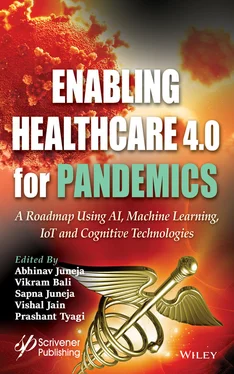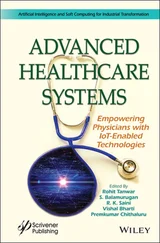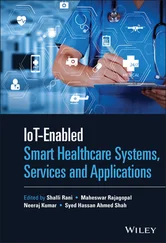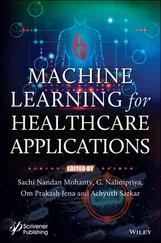There are numerous examples of the use of certain kinds of trackers, which has generated a number of comments from organizations in the struggle for human rights. In particular, there were malicious products, such as the mobile application CovidLock, promising to provide users with information about the state of coronavirus infection in the world, the program blocked the phone and demanded a fee for maintaining confidential information. Therefore, the world’ leading health services, universities and non-profit organizations around the world have set out to develop technology for voluntary contact tracking with the possibility of maximizing the confidentiality of users.
For the coordinated operation of applications and the creation of a joint system which will help track the spread of the coronavirus COVID-19, between operating systems Android and iOS, Google and Apple firstly developed the application programming interface (API), and then another, more modern platform which gives an opportunity to interact with a “wider ecosystem of applications and services health”; on the basis of Bluetooth technology. These technologies allow devices that use the operating systems iOS and Android to let clients take over their personal data with owned devices.
The possibilities of these technologies, one of the first in Europe began to use the Swiss citizens where the country released the app SwissCovid. This app should help to contain the spread of coronavirus emerging from quarantine. Only after the country’s Parliament approved legislation that regulates the use of this program and data protection, did the app became available on App Store and Google Play for all residents. As noted by the head of the digital transformation of the Federal office of public health, such an app highly protect data and privacy, due to the decentralized information storage and has blocked geolocation. The approach uses encryption Bluetooth technique to connect two smartphones at a distance of not less than 1.5 m from each other during minimally 15 min, keeping both privacy and minimal power. Under these conditions, the smartphone users who install the app will share the anonymous signals “Ephemeral ID-s”. On a centralized server, information will be transmitted only in the case where the user has tested positive for the COVID-19 and reported to the system—but also in anonymous form. The app will save the data on the smartphone of the user for maximum of a 14 day-period, during which the usual symptoms of coronavirus appear in a case of infection. Therefore, this new technology, in essence, from the beginning of its use, guarantees privacy for its user. Nothing like this has happened before. According to Carmella Troncoso, head of the laboratory of engineering of security and privacy at EPFL, who leads the project for decentralized tracking to ensure your privacy (DP-3T), such system is a critical change in the development of mass technologies. Soon Apple and Google want to implement this function directly into their operating systems [29, 30].
Quick was the reaction of the industry and developers in countries with a high level of robotics. They began to use robots effectively, reprogramming them to produce the tools needed to counter the pandemic: from the manufacture of personal protective equipment (PPE), ventilators, and the development of robots for automated testing. Thus, each technologically advanced country has shown a high ability to respond quickly to COVID-19 and launched in the relevant production. To speed up the testing process and respond to their result and to protect laboratory workers, the company Bright Machines has developed a robot to handle test samples of COVID-19 with the least human intervening. Process automation laboratory testing allows testing without interruption, which greatly increases the daily volume of tests [31].
About 600 American manufacturers were united in their intention to meet the needs of the country in the production of complex tools to deal with COVID-19 [32]. In France, the PSA group has teamed up with Valeo, Schneider Electric and Air Liquide for the production of the ventilators [33]. In Spain, cars manufacture SEAT in record time, just one week, reshaped for the fabrication of ventilators, and PPE. In the UK this practice in large companies, Airbus, Dyson, Ford and Rolls-Royce that are pooling their resources and reconfigure the production line for the production of 30 thousand of ventilators. Similar practices took over in industrialized countries of the world. Important is that business and government combine their efforts to maximize the use of national productive resources to combat COVID-19 and to stimulate economic activity of domestic manufacturers in conditions of economic crisis.
The reaction of the digital communities was quite similar—within 1–2 months we saw the flow of new products, projects and solutions to explore COVID-19 pandemic involving Big Data, neural networks, the possibility of AI [7]. In the framework of prevention, early diagnosis and monitoring COVID-19, coordinating scale and managing data necessary for implementing such strategies effectively in the highly successful countries dependent upon the integration of digital technologies in system health [34]. Thanks to the technology of AI, the IoT, augmented and virtual reality (AR/VR), capabilities of ML and Data Science, digital neural networks (DNN), and biotechnology, mankind has reached a new level of digital age with a new set of possibilities [35, 36].
Processing a large amount of information from the interconnected IoT devices has made possible the emergence of intelligent networks for proper health management systems, individually or collectively. This network monitors and prevents any types of diseases to improve patient safety. Without requiring human intervention, in language of facts it records data and information about the patient and starts the process of making solutions. Since in a pandemic, there is a great need to use appropriate and organized medical events, using the concept of IoT makes medical care more accessible to patients. Thanks to the technology of IoT, the patient can monitor glucometer data, blood pressure, heart rate, or online consulting with a doctor. An important application of this technology in the field of health is tracking sites for medical instruments and devices timely for robust management. This would enhance effectively the workflow of patient management and also useful for making decision in difficult conditions [37].
Efficiently working through big data, AI helped to simplify tracking people infected with COVID-19. Detecting the level of infection of this virus requires not only finding the accumulation “hot spots”, but also predicting the spread of infection and the risk of complications associated with COVID-19 for people of different ages, and with different comorbid pathology. Using such algorithms, all countries have taken necessary measures to halt COVID-19 transmission, especially among vulnerable societal groups. Such tools as maps of migration that use mobile phones, applications for social media and mobile payments to gather data timely on the whereabouts of individuals helped to build a novel system for the detecting and treating cases of COVID-19, providing faster decision-making, which is economically advantageous. Special technology based on AI is able to recognize and remove false information about COVID-19 in the Internet and social platforms.
Thanks to the technology of AI, scientists have learned more about the nature of the virus, its characteristics and use it to develop vaccines and drugs to combat this disease. Scientists have turned to AI technology and IoT to optimize the procedure of the study drugs for managing COVID-19 patients. These technologies, together with DNN and ML capabilities can quickly and efficiently process the huge data to speed-up the process of testing vaccines and medicines developed by the samples in real-time.
Читать дальше












